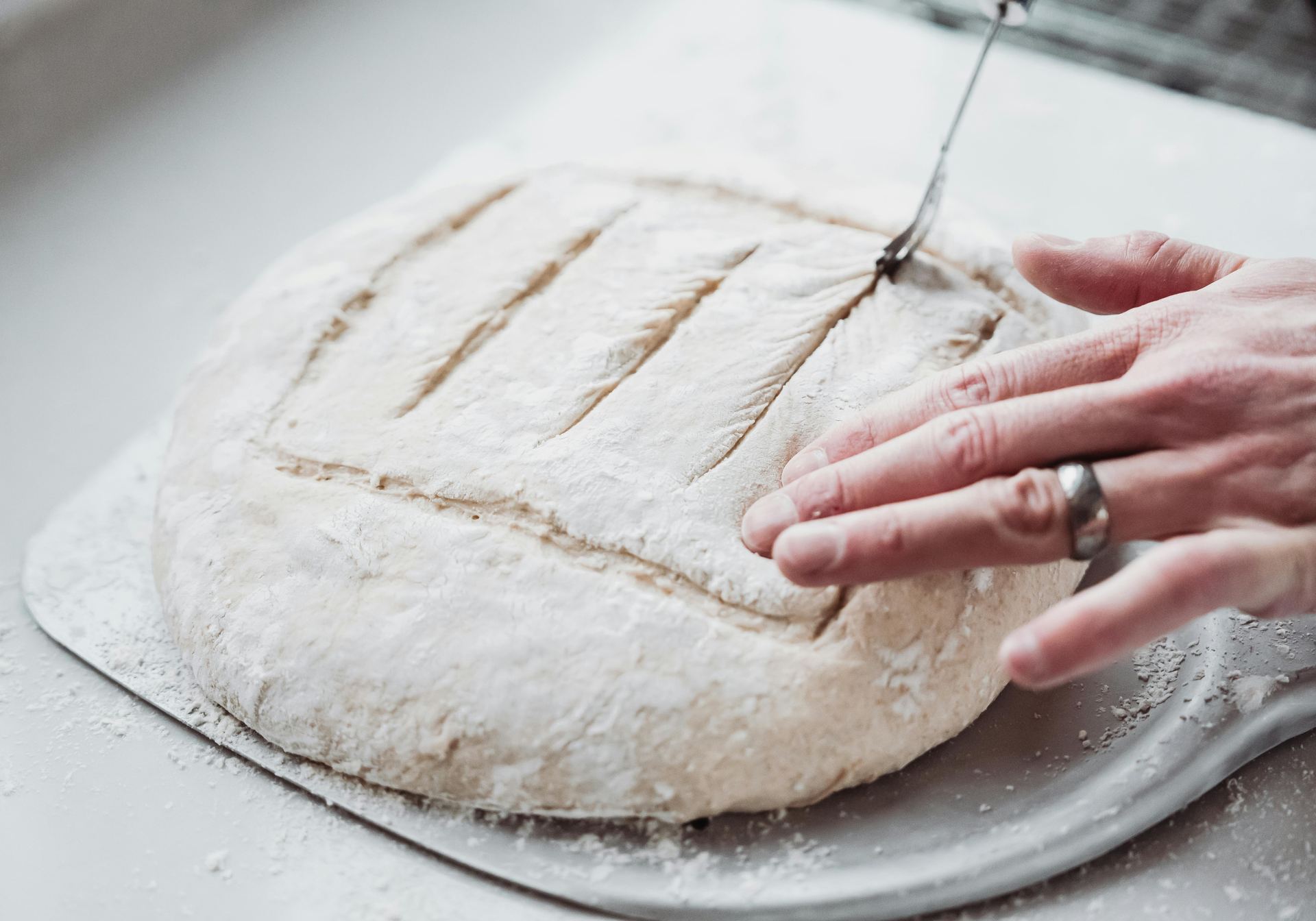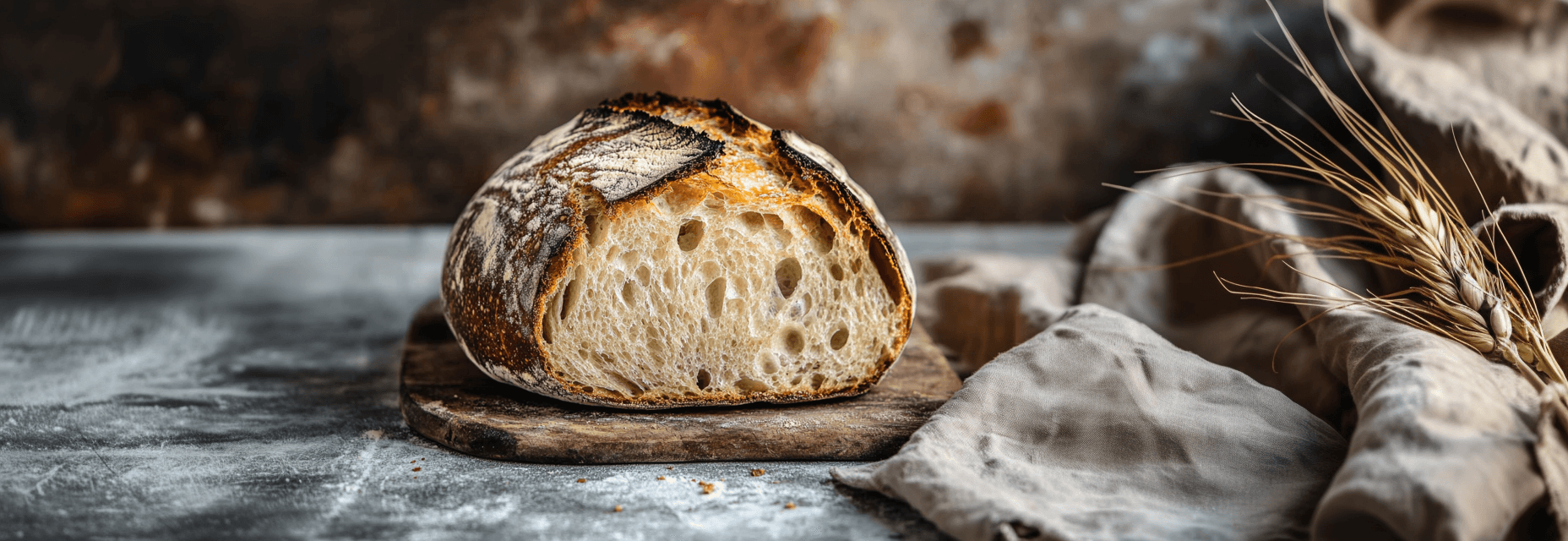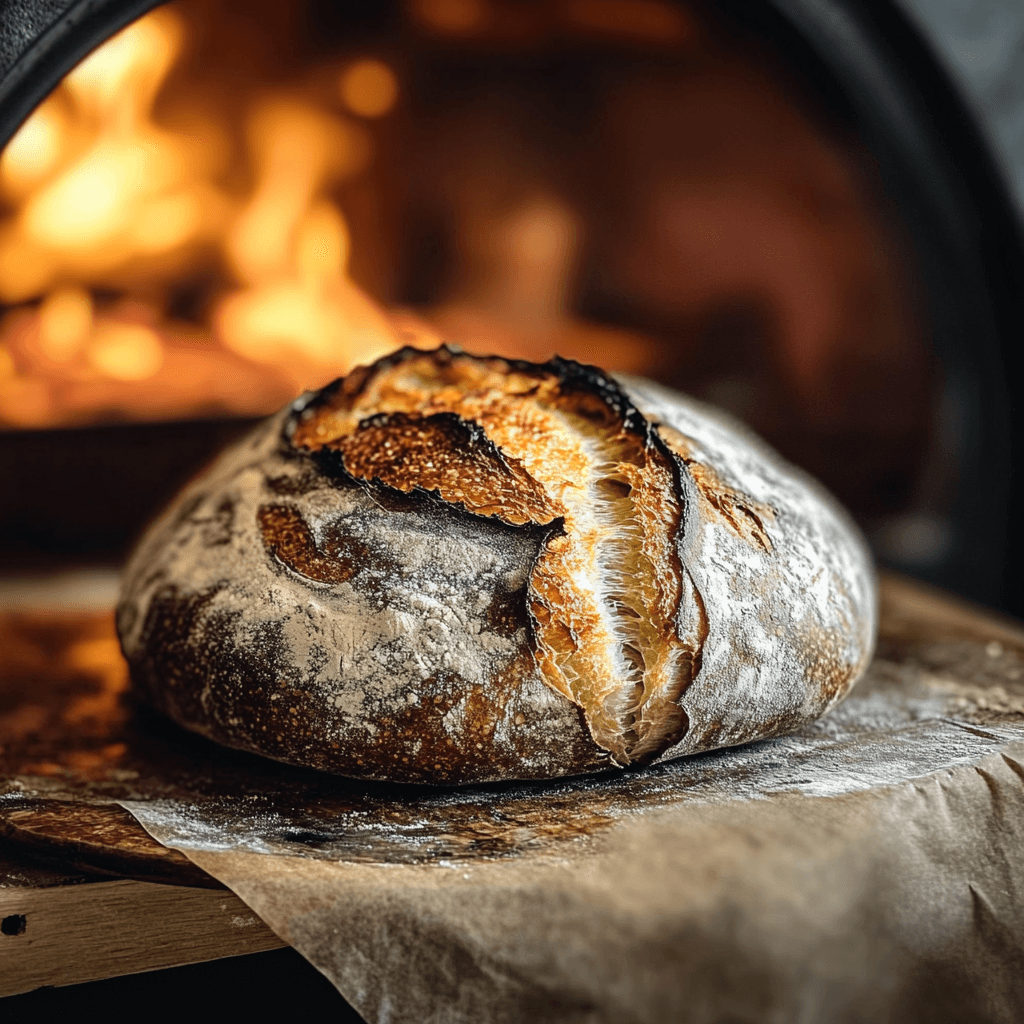
Easy Homemade Sourdough Bread Recipe
Learn how to make delicious sourdough bread with this easy step-by-step recipe. Perfect for beginners and experienced bakers.
🍞Discover the Art of Sourdough Bread Making
Sourdough bread is not only delicious; it's also an enriching experience that connects you with a time-honored tradition. With its tangy flavor and chewy texture, sourdough is loved by bread enthusiasts around the globe. In this post, you’ll uncover the secret to baking your own sourdough bread from scratch. We’ll cover everything from creating your own sourdough starter to the baking process, ensuring that even if you're a beginner, you can impress your friends and family with a homemade loaf. Prepare to warm your kitchen with the delightful aroma of freshly baked sourdough!
Great Bread Needs a Great Starter
To master the art of sourdough baking, every skilled baker requires a vibrant and resilient sourdough starter. With Moon Starter Premium Sourdough Starter, you have just what you need. Embark on your baking adventure today!

How To Make A Rustic Loaf
🥖Ingredients You'll Need
To embark on your sourdough baking journey, gather the following simple ingredients:
Sourdough Starter: This is the heart of your sourdough bread. You can either purchase it or make your own using flour and water.
Flour: Essential for structure, a mix of all-purpose flour and whole wheat flour yields the best results. About 500 grams should suffice.
Water: Use around 350 grams of room temperature water to mix with your flour.
Salt: About 10 grams of salt is needed to enhance the dough's flavor and strength. It's important not to skimp on this ingredient!
With these components in hand, you're ready to create a loaf that’s both flavorful and crusty. Remember, the quality of your ingredients can significantly impact the final result!
🕒Steps to Create Your Sourdough Bread
Once you have your ingredients ready, follow these steps to bake your sourdough bread:
Feed Your Starter: If you're using a refrigerated sourdough starter, feed it 4-8 hours before you start baking. This ensures that it is active and bubbly.
Mix the Dough: In a large mixing bowl, combine the sourdough starter, flour, and water. Mix until a shaggy dough forms. Let it rest for 30 minutes (this is known as autolyse).
Knead and Fold: After resting, sprinkle salt over the dough and work it in by folding and stretching the dough in the bowl. You can also take it out onto a floured surface and knead it for about 10 minutes until it is smooth and elastic.
First Rise: Place the dough back in the bowl, cover it with a damp cloth, and let it rise for 4-6 hours at room temperature until doubled in size.
Shape the Dough: Once risen, turn the dough out onto a floured surface, gently shape it into a round loaf, and place it in a floured proofing basket. Let it rest while you preheat your oven.
🔥Bake Your Sourdough Bread
Preheat the Oven: About 30 minutes before you plan to bake, preheat your oven to 450°F (232°C). If you have a pizza stone or Dutch oven, let them heat up as well.
Score the Bread: Just before baking, carefully turn your dough out onto a piece of parchment paper. Use a sharp knife or razor blade to score the top of the loaf. This helps control where the bread expands during baking, creating that beautiful crust.
Bake: Gently place your loaf into the oven (or the preheated Dutch oven) and bake for 30-40 minutes, until the crust is deeply golden brown and the internal temperature reaches about 200°F (93°C).
Cool: Once baked, remove your sourdough from the oven and let it cool on a wire rack for at least an hour before slicing. This allows the crumb to set perfectly, giving you those beautiful slices later. Enjoy the fruits of your labor and savor every bite of your homemade sourdough bread!
Troubleshooting Common Sourdough Problems
Baking sourdough bread can be a delightful yet daunting task, especially for those new to the process. Here are some common issues and their solutions to help ensure your sourdough turns out beautifully: 1) Dense or Heavy Loaf: This may be due to an inactive starter or insufficient kneading. Always ensure your starter is bubbly and active before use, and knead until the dough passes the windowpane test. 2) Flat Bread: If your bread spreads out rather than rising, this can be caused by insufficient proofing. Try extending the time you let your dough rise before baking. 3) Too Sour: If your bread tastes overly sour, it could be due to a longer fermentation time. Monitor the rise and decide when to bake based on the dough's appearance rather than solely relying on time. 4) Crust Too Hard: If your crust is too tough, consider baking with the lid on a Dutch oven for part of the time to create steam, then remove it to finish baking. By learning from these issues, you’ll be able to refine your technique and produce a perfect loaf every time!
Experimenting with Variations
Once you have mastered the basic sourdough recipe, don’t hesitate to experiment with different variations! Here are some ideas to inspire your culinary creativity: 1) Add Mix-Ins: Incorporate seeds, nuts, or dried fruits into the dough for additional flavor and texture. 2) Herb and Cheese Loaf: Adding fresh herbs or cheese to the dough can create a savory loaf that’s perfect for sandwiches or as a side dish. 3) Whole Grains: Substitute some of the white flour for whole grain flours like rye or spelt to give your bread a hearty flavor and health benefits. 4) Flavored Sourdough: Try infusing your starter or dough with various flavors such as garlic, onion, or sun-dried tomatoes for a twist on the traditional recipe. These variations not only keep things interesting, but they also allow you to tailor your bread to your preference and suit different occasions!
📷Final Images and Inspiration
🌟Baking Sourdough: A Rewarding Experience
Baking your own sourdough bread is a truly rewarding journey that nourishes both the body and soul. Whether you are a seasoned baker or just starting out, the process of nurturing a sourdough starter and seeing your bread rise offers unmatched satisfaction. Remember these key takeaways as you embark on your sourdough adventure: 1) Patience is Key: Sourdough requires time, so embrace the process and enjoy every step. 2) The Importance of a Good Starter: A healthy, active starter is crucial—take the time to maintain and feed it properly. 3) Don’t Fear Experimentation: Feel free to adjust the recipe to suit your tastes, and don’t be afraid to make mistakes; each attempt is a learning experience. 4) Enjoy the Results: Share your creations with family and friends, or enjoy a slice fresh out of the oven. Each loaf tells a story, and there’s nothing quite like the taste of homemade sourdough. Happy baking!

